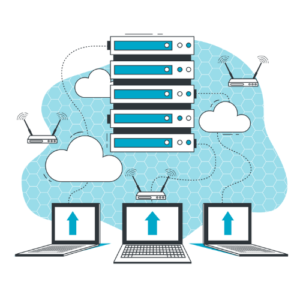Evolving Business Requirements
The business world continuously changes, driven by new technologies, consumer expectations, and regulatory requirements. Traditional databases, often built decades ago, are not designed to handle the dynamic and complex data workloads required today. Modernization ensures databases are agile and capable of adapting to evolving business needs.
Scalability and Performance
As businesses grow, so does the volume of data they generate and need to process. Traditional databases often need help with scalability and performance issues, leading to slow query responses and system bottlenecks. Modern databases are designed to scale horizontally and vertically, providing the necessary performance to handle large data volumes efficiently.
Security and Compliance
With increasing cyber threats and stringent data protection regulations, maintaining robust security and compliance is paramount. Modern databases come equipped with advanced security features such as encryption, access control, and audit logs, ensuring data integrity and regulatory compliance.
Cost Efficiency
Outdated database systems can be expensive to maintain, requiring significant resources for hardware, software, and skilled personnel. Modernizing databases can reduce operational costs by leveraging cloud infrastructure, automation, and more efficient data management practices.
Innovation and Competitive Advantage
Database modernization fosters innovation by enabling businesses to leverage advanced technologies such as artificial intelligence (AI), machine learning (ML), and big data analytics. By modernizing their databases, companies can gain insights from their data, improve decision-making, and achieve a competitive edge.
Assessment and Planning
The first step in database modernization is to conduct a thorough assessment of the existing database infrastructure. This involves evaluating current performance, identifying pain points, and defining business objectives. Based on this assessment, a detailed modernization plan is developed, outlining the scope, timeline, and resources required.
Selecting the Right Technology
Choosing the appropriate database technology is crucial for a successful modernization project. Businesses must consider factors such as data types, workload requirements, scalability, and security features. Popular modern database technologies include SQL and NoSQL databases, cloud-based databases, and distributed databases.
Data Migration
Data migration is a critical phase in the modernization process. It involves transferring data from legacy databases to the new system while ensuring data integrity and minimal downtime. This step may also include data cleansing and transformation to align with the new database schema.
Application Refactoring
In many cases, applications that interact with the database may need to be refactored to ensure compatibility with the modern database. This may involve updating code, optimizing queries, and implementing new data access methods.
Testing and Validation
Thorough testing is essential to ensure the new database system functions as expected. This includes performance testing, security testing, and validation of data accuracy. Any issues identified during testing must be resolved before moving to production.
Deployment and Monitoring
Once testing is complete, the modernized database is deployed to the production environment. Continuous monitoring is necessary to ensure optimal performance, security, and availability. Businesses should also establish a process for regular maintenance and updates.

 Benefits of PostgreSQL in the Cloud: A Comprehensive Guide
Benefits of PostgreSQL in the Cloud: A Comprehensive Guide What Is MongoDB? Important Features & How It Works 2025
What Is MongoDB? Important Features & How It Works 2025 Top 5 Reasons Why You Should Use MongoDB (2025)
Top 5 Reasons Why You Should Use MongoDB (2025)


